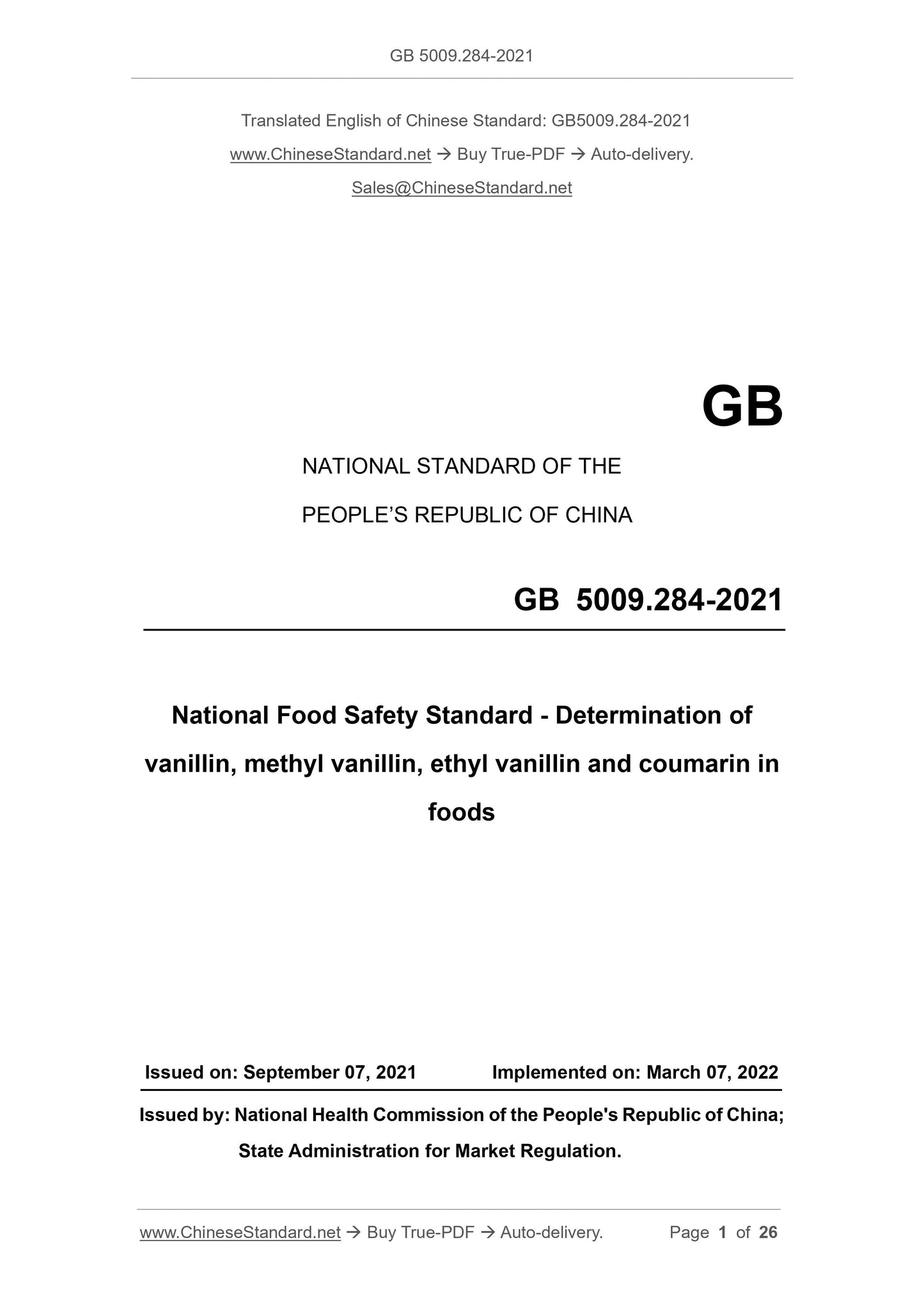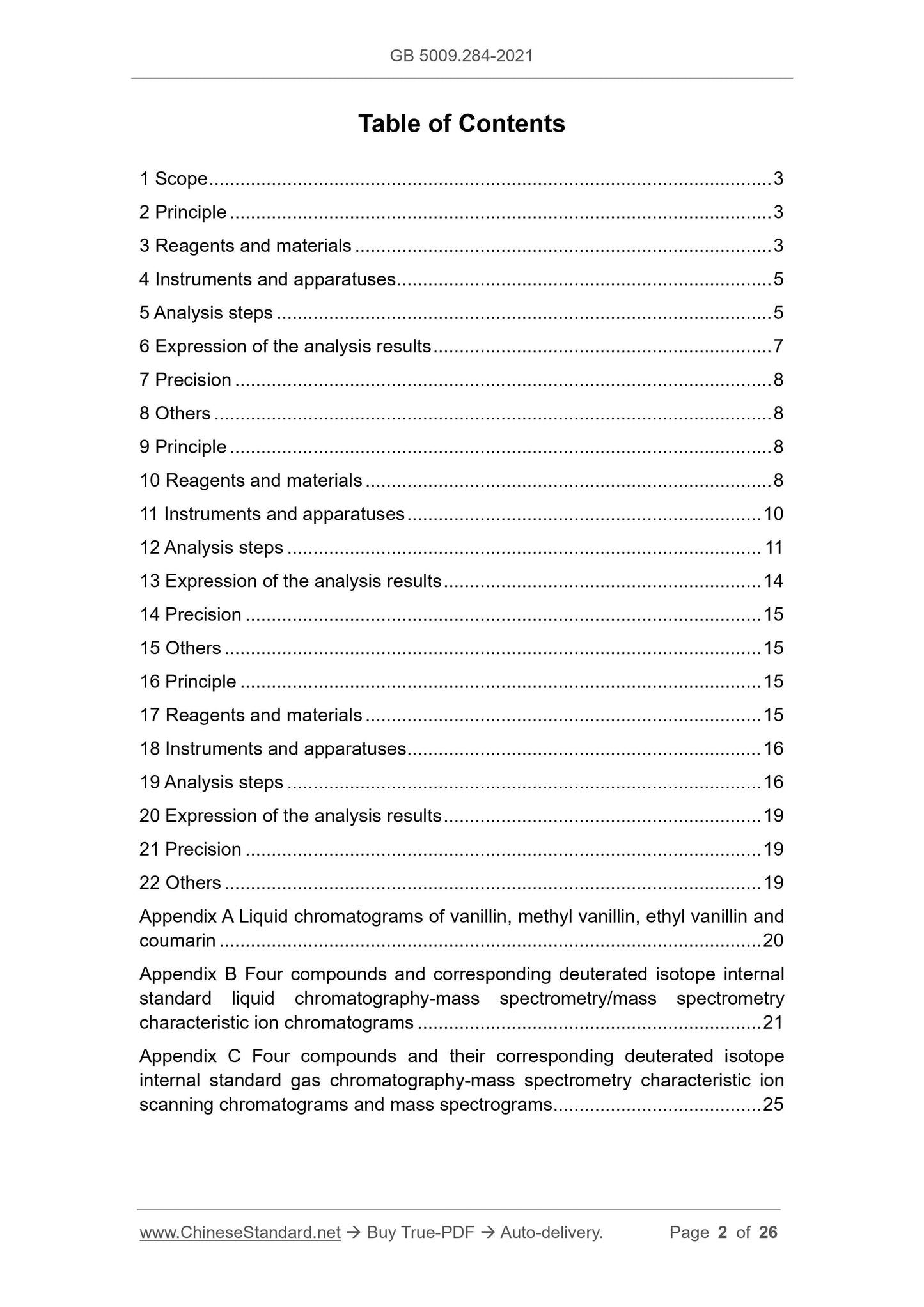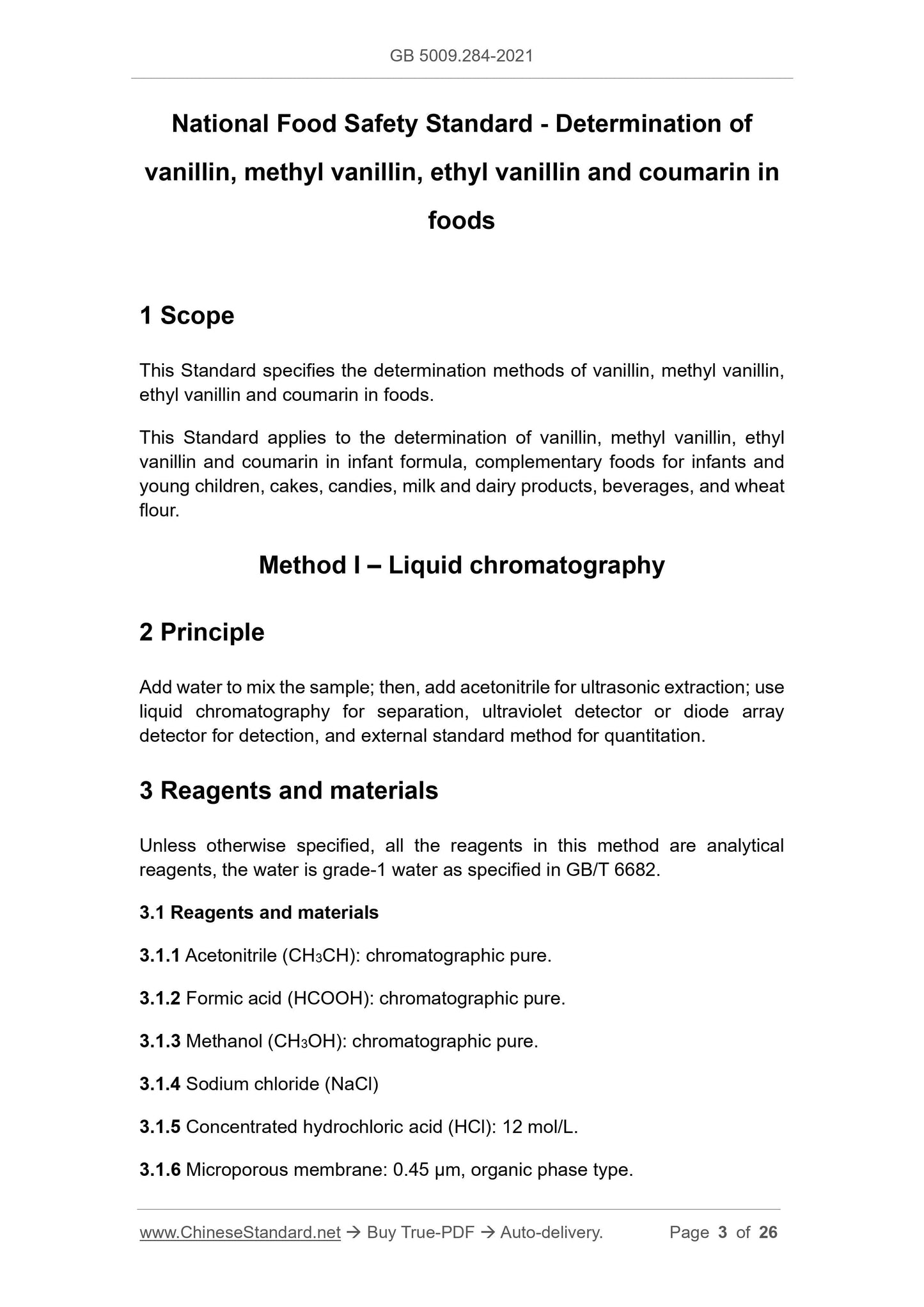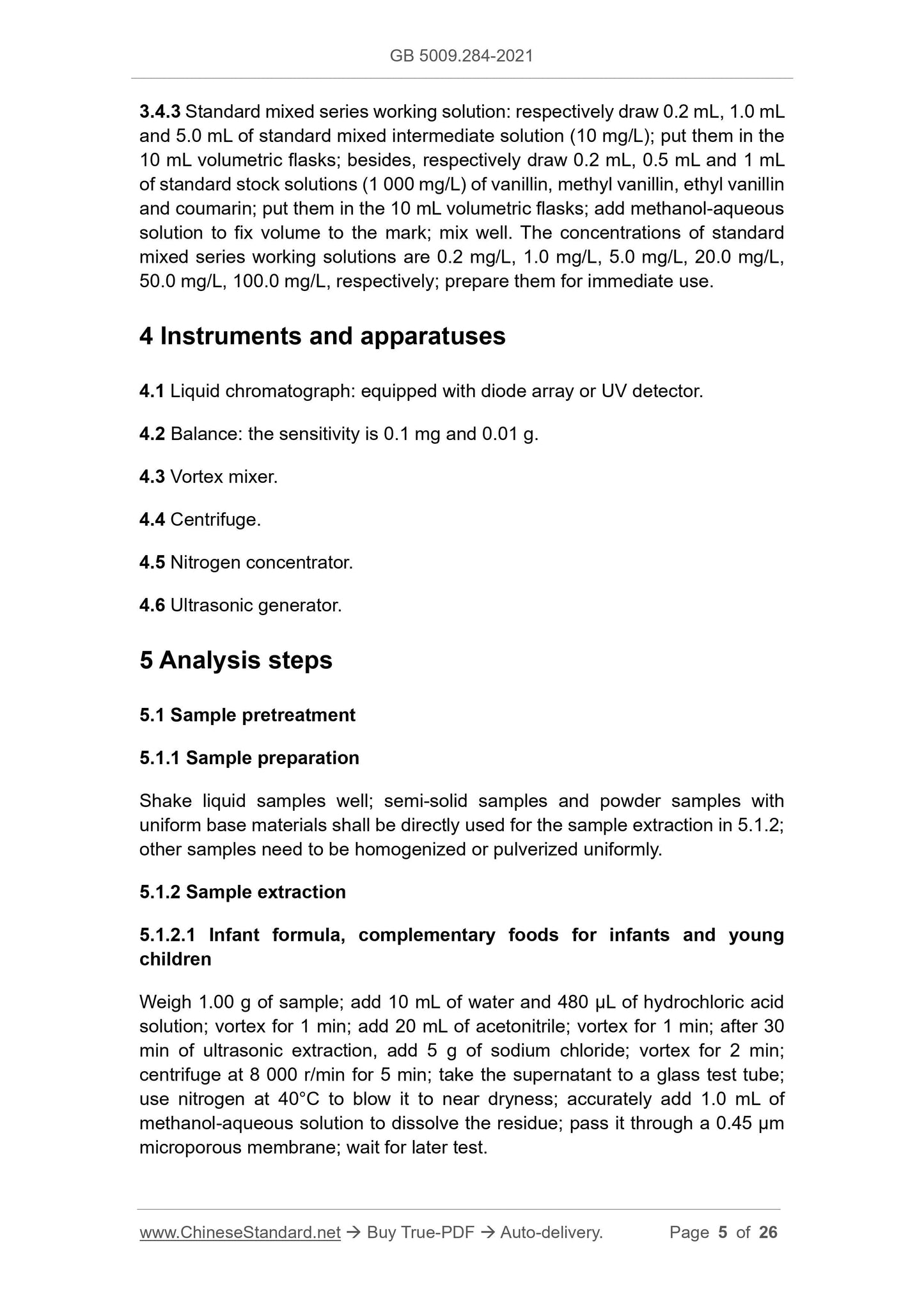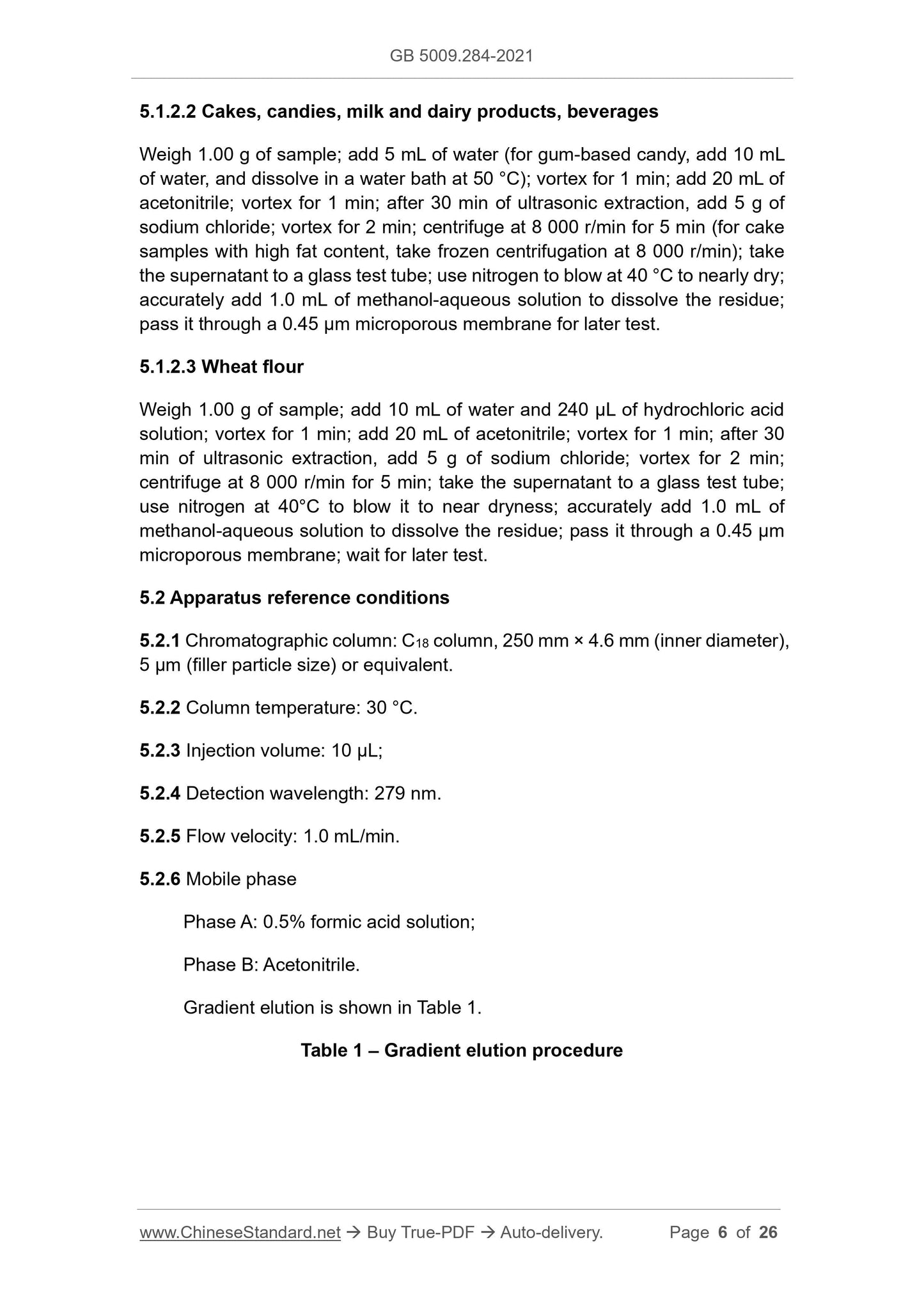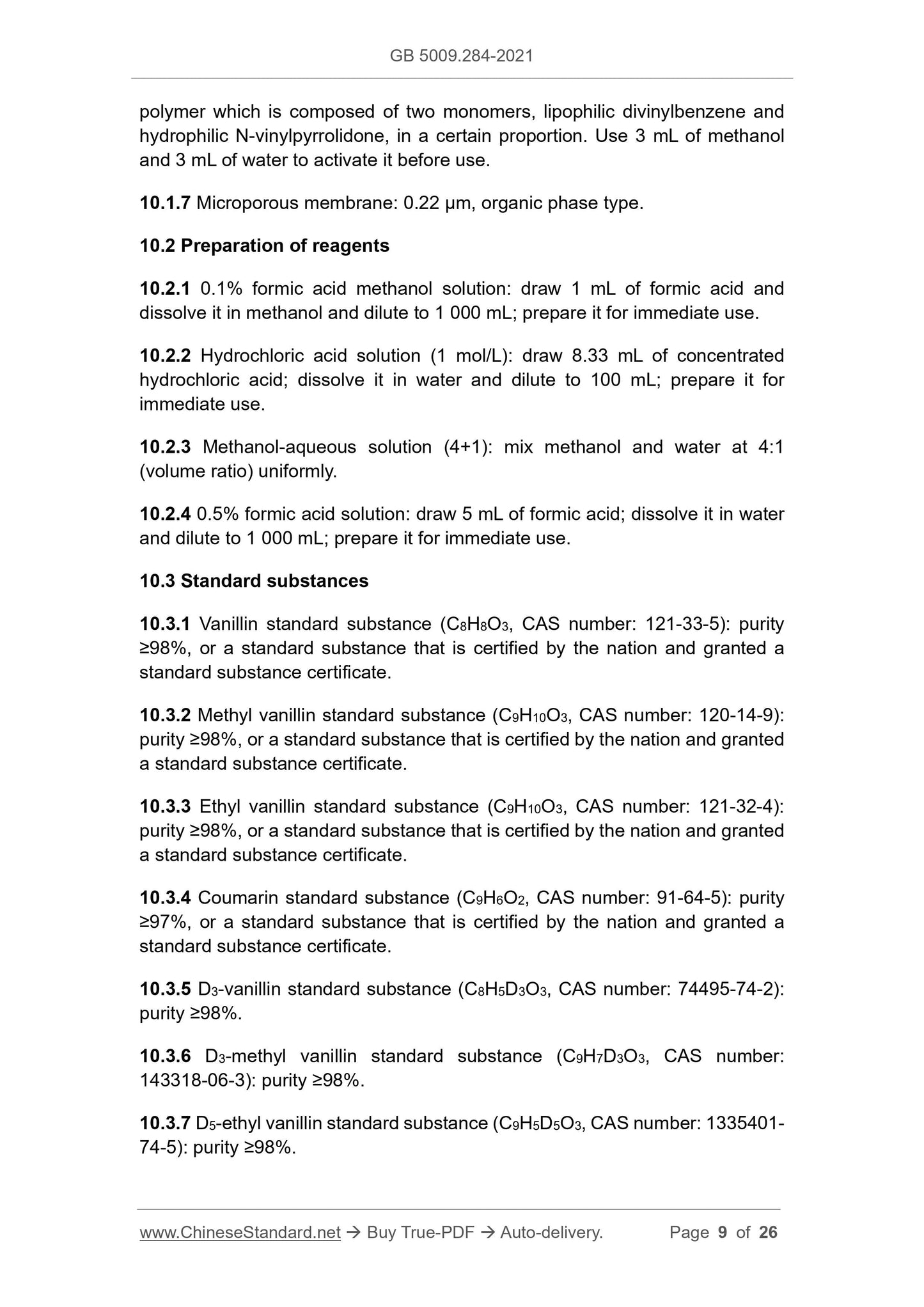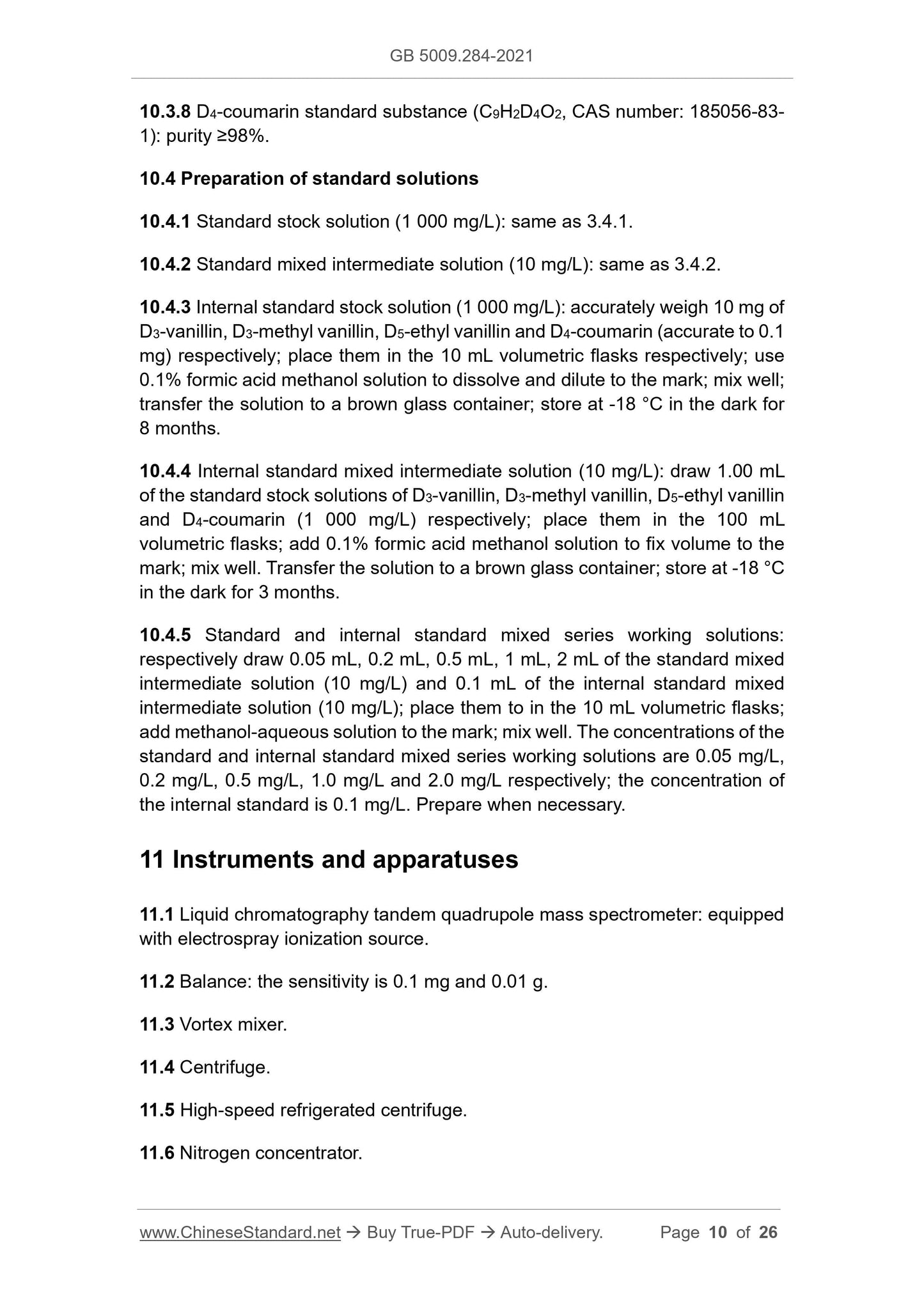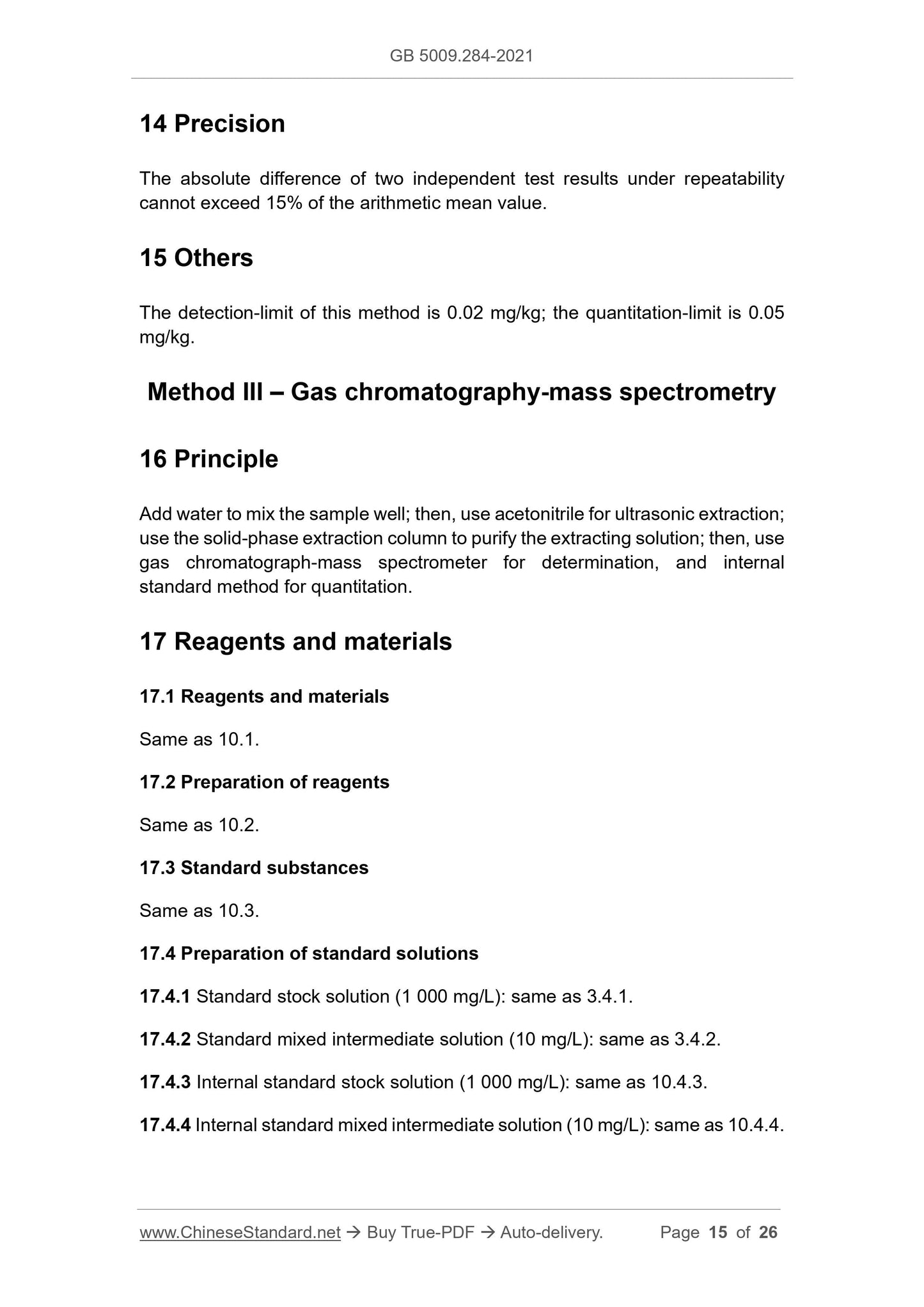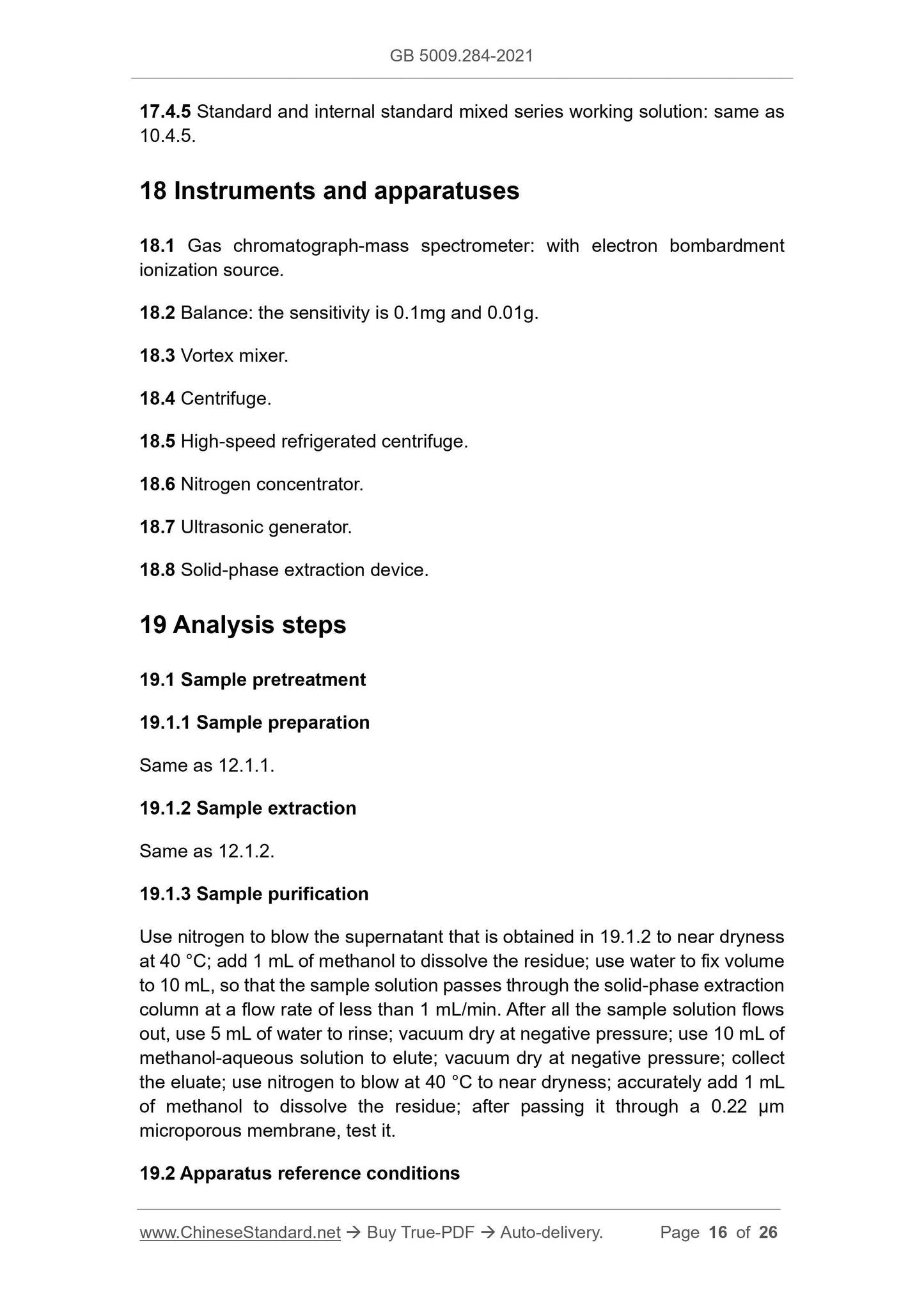1
/
of
9
www.ChineseStandard.us -- Field Test Asia Pte. Ltd.
GB 5009.284-2021 English PDF
GB 5009.284-2021 English PDF
Regular price
$260.00
Regular price
Sale price
$260.00
Unit price
/
per
Shipping calculated at checkout.
Couldn't load pickup availability
GB 5009.284-2021: National food safety standard - Determination of vanillin, methyl vanillin, ethyl vanillin and coumarin in foods
Delivery: 9 seconds. Download (and Email) true-PDF + Invoice.Get Quotation: Click GB 5009.284-2021 (Self-service in 1-minute)
Newer / historical versions: GB 5009.284-2021
Preview True-PDF
Scope
This Standard specifies the determination methods of vanillin, methyl vanillin,ethyl vanillin and coumarin in foods.
This Standard applies to the determination of vanillin, methyl vanillin, ethyl
vanillin and coumarin in infant formula, complementary foods for infants and
young children, cakes, candies, milk and dairy products, beverages, and wheat
flour.
Method I – Liquid chromatography
Basic Data
| Standard ID | GB 5009.284-2021 (GB5009.284-2021) |
| Description (Translated English) | National food safety standard - Determination of vanillin, methyl vanillin, ethyl vanillin and coumarin in foods |
| Sector / Industry | National Standard |
| Classification of Chinese Standard | X40 |
| Word Count Estimation | 19,153 |
| Issuing agency(ies) | National Health Commission of the People's Republic of China, State Administration for Market Regulation |
Share
